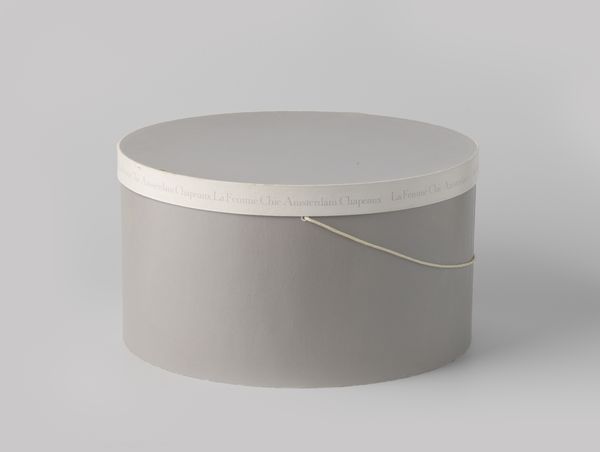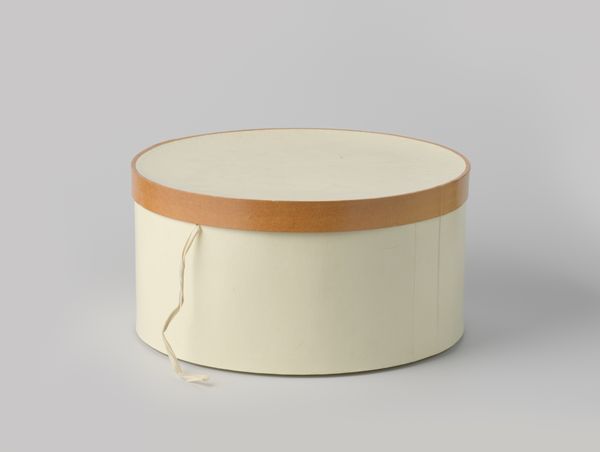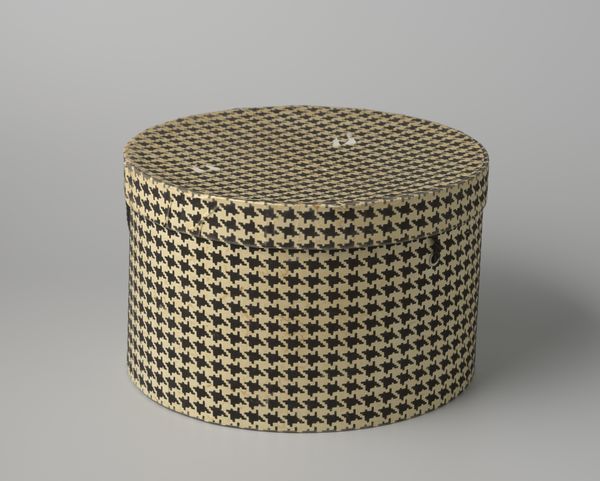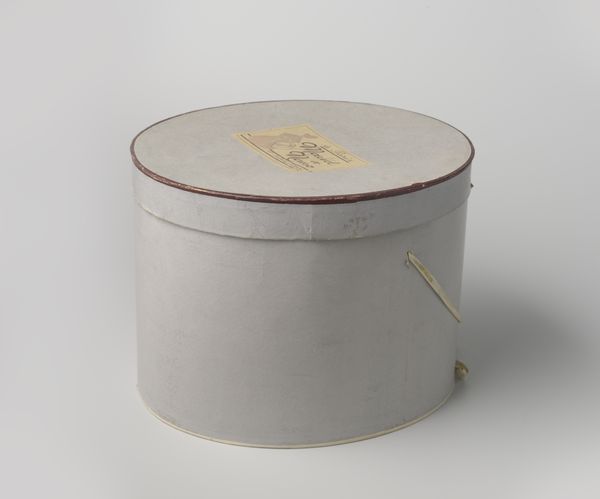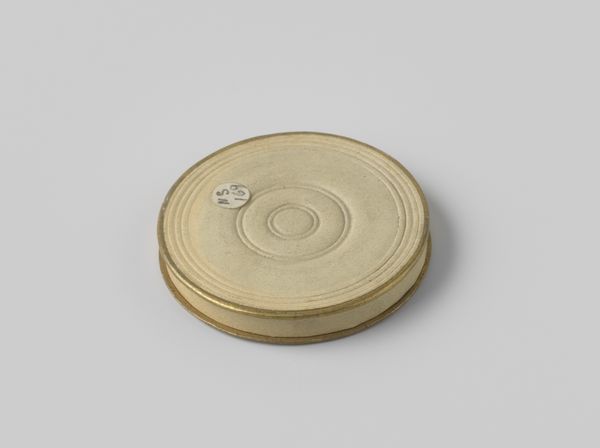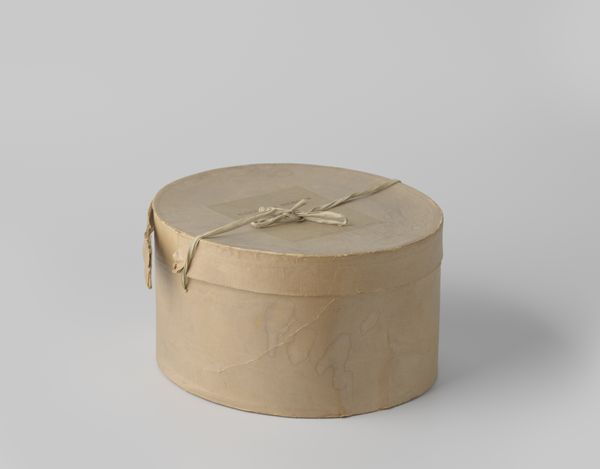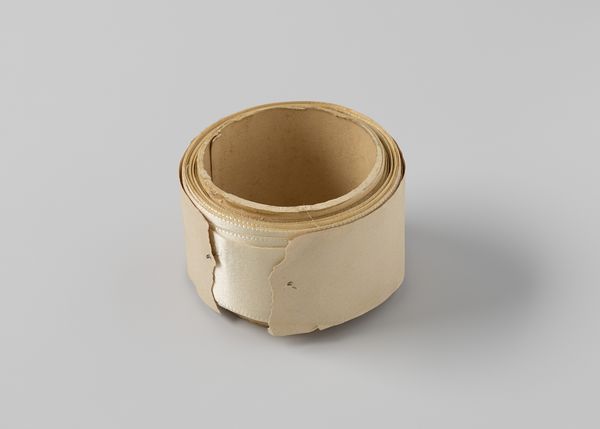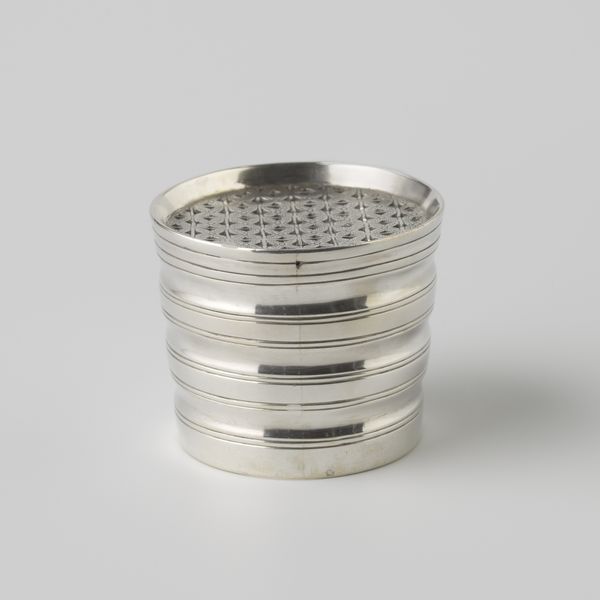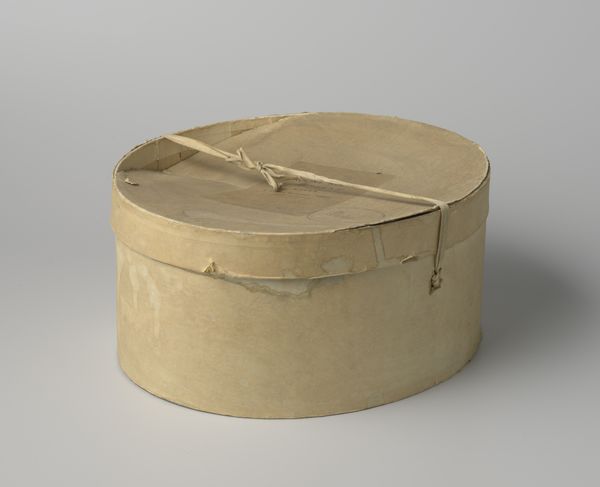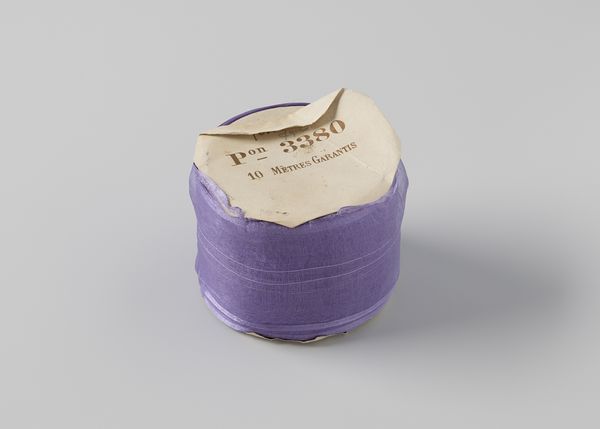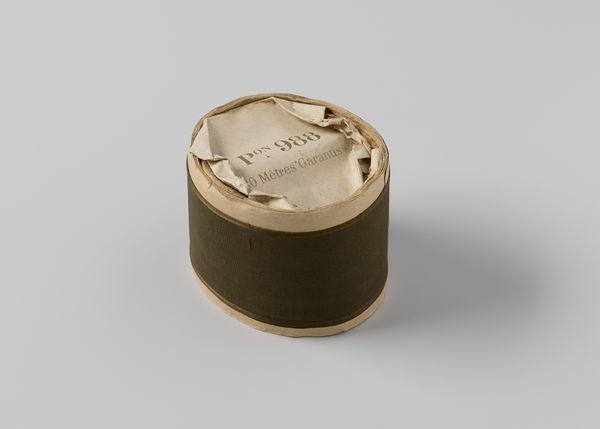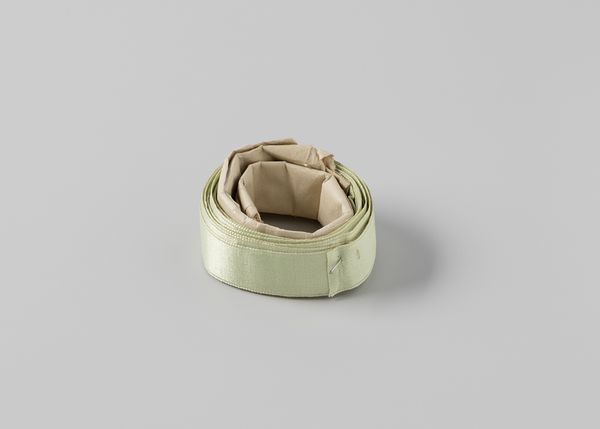
Ronde hoedendoos van karton, bekleed met papier bedrukt met pied de poule-motief in grijs op geel c. 1950 - 1958
0:00
0:00
photography
#
studio photography
#
product studio photography
#
product shot
#
shading render
#
photography
#
product design photgrpaphy
#
metallic object render
#
product mock up
#
graphic design product photography
#
decorative-art
#
3d rendered logo
#
product render
Dimensions: height 17 cm, diameter 30.5 cm
Copyright: Rijks Museum: Open Domain
Curator: This is a hat box, dating from around 1950 to 1958, crafted by Elysee Modes. The core material is cardboard, overlaid with paper printed in a charming grey and yellow pied-de-poule pattern. What's your initial reaction? Editor: Well, first it brings a sense of calm with its subdued palette, but it also whispers of elegance, and forgotten glamour, doesn't it? It's got that mid-century, Mad Men kind of feel. I want to imagine the extravagant hat it once held! Curator: Exactly. The printed paper interests me because it suggests how printed design elements allowed manufacturers to use cheaper cardboard to produce packaging with visual interest. I see the box itself, like the hats it might've protected, as the product of complex intersections between textile patterns, the industrial printing trade, and the ready-to-wear culture. Editor: Oh, absolutely. There is something intensely tactile, even human about that dogtooth check. I can see some craftsperson meticulously selecting just the right ribbon to finish the piece! To me, it feels like a physical manifestation of an era, and its optimism, especially after wartime austerity. Curator: Certainly. And don’t forget the economies involved. The design maximizes the efficient use of cheap paper and relatively unskilled labor. This brings high fashion hats to a broader consumer base. What looks simple represents some of the contradictions of modern consumerism. Editor: Absolutely. Still, looking at it now, decades later, the whole design makes me nostalgic. The humble material—the cardboard, the paper—lends a kind of poignant fragility. Does it have a certain poetry? Curator: It’s certainly a document of its time, wouldn’t you agree? A well preserved example of how everyday objects acquired a distinctive kind of modernism during those post-war decades. Editor: Indeed, I leave this hatbox filled with thoughts about vanished styles. I feel the echo of some perfectly dressed lady stepping out to tea, doesn't it feel charming?
Comments
No comments
Be the first to comment and join the conversation on the ultimate creative platform.
